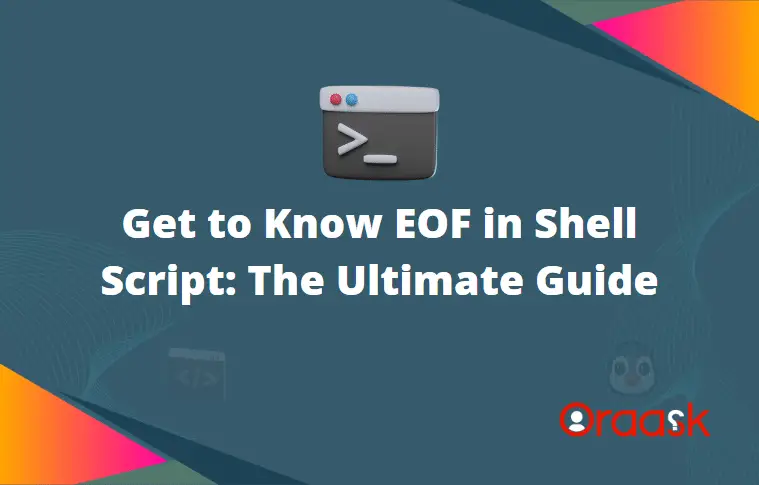How Can We Help?
If you’re new to shell scripting, you may have encountered the term “EOF” and wondered what it means. In short, EOF stands for “End of File” and is used in shell scripts to mark the end of a file or input stream. In this article, we will explore what EOF is and how it can be used in shell scripting and don’t forget to take the quize at the end of the article to proof the concept.
What is EOF in Shell Script?
EOF is a unique character that signifies the end of a file or input stream. When a shell script encounters the EOF character, it knows it has reached the end of the file and stops processing. The EOF character is often used in shell scripts as a marker to indicate the end of a section of code or to specify the end of input for a particular command or program.
How to Use EOF in Shell Scripts?
In shell scripts, EOF is commonly used in conjunction with the “here document” syntax. Here documents allow you to embed a block of text within a shell script, which can then be used as input for a command or program. The syntax for a here document is as follows:
EOF Syntax:
command << EOF
text to be used as input
EOFIn this example, “command” is the command or program that will be run, and “text to be used as input” is the input that will be passed to the command. The “<<” operator indicates that the following text will be used as input until the EOF character is encountered.
Here is a more concrete example. Let’s say we want to create a new file and write some text to it using a shell script. We can use the “cat” command to accomplish this as follows:
Example (1)
cat << EOF > new_file.txt
This is some text that will be written to the new file.
EOFIn this example, the “<<” operator tells the shell to treat everything that follows as input for the “cat” command. The input includes the text we want to write to the new file, followed by the EOF character to indicate the end of the input. The “>” operator redirects the output of the “cat” command to the file “new_file.txt“.
Example (2)
Let’s say you have a script that needs to prompt the user for input, but you want to give them the option to enter multiple lines of text. You could use a here document with the EOF marker to allow the user to input as much text as they need. Here’s an example:
#!/bin/bash
echo "Enter some text. Press Ctrl-D when finished:"
cat << EOF
This is the first line of text.
This is the second line of text.
And this is the third line of text.
EOF
echo "Thanks for the input!"In this example, the cat command is used with a here document to allow the user to input multiple lines of text. The “<<” operator tells the shell to read input until it encounters the EOF marker, which in this case is “EOF“. The text between the “<<” EOF and EOF lines are considered the cat command input and printed to the screen. Once the user is finished entering text, they can press Ctrl-D to signal the end of input, and the script will continue running.
Benefits of Using EOF in Shell Scripts
Using EOF in shell scripts can be very helpful for several reasons. First, it allows you to easily embed large blocks of text within a script without using multiple echo commands. Second, it allows you to specify the end of input for a particular command or program, which can be especially useful if you need to pass in input that includes multiple lines of text.
Potential Issues with EOF
While EOF can be a powerful tool for shell scripting, there are some potential issues to be aware of. One issue is that EOF is a reserved keyword in some programming languages, so you may need to use a different marker if you’re working with code that uses EOF as a keyword. Another issue is that the EOF marker must be on a line alone, with no leading or trailing whitespace. If there is any whitespace before or after the EOF marker, the shell script will not recognize it as the end of the input.
EOF in Shell Script Quize
EOF in Shell Script Quize
Conclusion
In summary, EOF is a unique character used in shell scripting to indicate the end of a file or input stream. It is often used in conjunction with the “here document” syntax to embed large blocks of text within a script and to specify the end of input for a particular command or program. While EOF can be a powerful tool, it’s essential to be aware of its potential issues, such as conflicts with reserved keywords and issues with leading or trailing whitespace.




